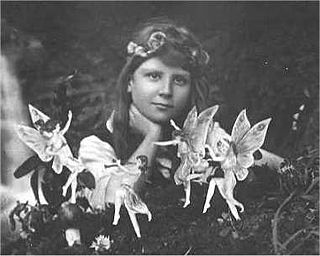
The Cottingley Fairies appear in a series of five photographs taken by Elsie Wright (1901–1988) and Frances Griffiths (1907–1986), two young cousins who lived in Cottingley, near Bradford in England. In 1917, when the first two photographs were taken, Elsie was 16 years old and Frances was 9. The pictures came to the attention of writer Sir Arthur Conan Doyle, who used them to illustrate an article on fairies he had been commissioned to write for the Christmas 1920 edition of The Strand Magazine. Doyle, as a spiritualist, was enthusiastic about the photographs, and interpreted them as clear and visible evidence of psychic phenomena. Public reaction was mixed; some accepted the images as genuine, others believed that they had been faked.

"Beauty and the Beast" is a fairy tale written by French novelist Gabrielle-Suzanne Barbot de Villeneuve and published in 1740 in La Jeune Américaine et les contes marins. Her lengthy version was abridged, rewritten, and published by French novelist Jeanne-Marie Leprince de Beaumont in 1756 in Magasin des enfants to produce the version most commonly retold. Later, Andrew Lang retold the story in Blue Fairy Book, a part of the Fairy Book series, in 1889. The fairy tale was influenced by Ancient Greek stories such as "Cupid and Psyche" from The Golden Ass, written by Lucius Apuleius Madaurensis in the second century AD, and "The Pig King", an Italian fairytale published by Giovanni Francesco Straparola in The Facetious Nights of Straparola around 1550.
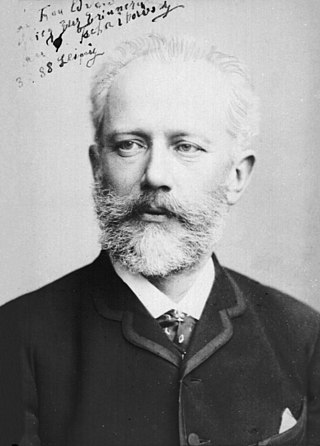
The Nutcracker, Op. 71, is an 1892 two-act classical ballet by Pyotr Ilyich Tchaikovsky, set on Christmas Eve at the foot of a Christmas tree in a child's imagination. The plot is an adaptation of E. T. A. Hoffmann's 1816 short story The Nutcracker and the Mouse King. The ballet's first choreographer was Marius Petipa, with whom Tchaikovsky had worked three years earlier on The Sleeping Beauty, assisted by Lev Ivanov. Although the complete and staged The Nutcracker ballet was not as successful as had been the 20-minute Nutcracker Suite that Tchaikovsky had premiered nine months earlier, The Nutcracker soon became popular.
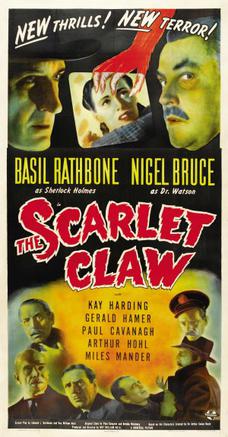
The Scarlet Claw is a 1944 American mystery thriller film based on Sir Arthur Conan Doyle's Sherlock Holmes detective stories. Directed by Roy William Neill and starring Basil Rathbone and Nigel Bruce, it is the eighth film of the Rathbone/Bruce series. David Stuart Davies notes on the film's DVD audio commentary that it's generally considered by critics and fans of the series to be the best of the twelve Holmes films made by Universal.
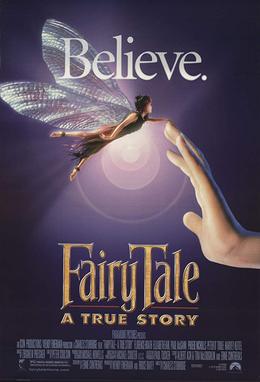
FairyTale: A True Story is a 1997 fantasy drama film directed by Charles Sturridge and produced by Bruce Davey and Wendy Finerman. It is loosely based on the story of the Cottingley Fairies, and follows two children in 1917 England who take a photograph soon believed to be the first scientific evidence of the existence of fairies. The film was produced by Icon Productions and was distributed by Paramount Pictures in the United States and by Warner Bros. internationally.

Spirit photography is a type of photography whose primary goal is to capture images of ghosts and other spiritual entities, especially in ghost hunting. It dates back to the late 19th century. The end of the American Civil War and the mid-19th Century Spiritualism movement contributed greatly to the popularity of spirit photography. Photographers such as William Mumler and William Hope ran thriving businesses taking photos of people with their supposed dead relatives. Both were shown to be frauds, but "true believers", such as Sir Arthur Conan Doyle, refused to accept the evidence as proof of a hoax.
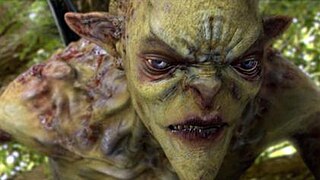
"Small Worlds" is the fifth episode of the first series of the British science fiction television series Torchwood, which was originally broadcast on the digital television channel BBC Three on 12 November 2006.

The Promise is a 1979 American romantic drama film released by Universal Pictures which starred Kathleen Quinlan, Stephen Collins, and Beatrice Straight. It was directed by Gilbert Cates and produced by Fred Weintraub and Paul Heller. Weintraub and Heller also wrote the source story, which Garry Michael White dramatized; the resultant film was novelized by Danielle Steel. It was remade in India as the Hindi film Yeh Vaada Raha (1982).

Geoffrey Hodson was an occultist, Theosophist, Co-Freemason, mystic, Liberal Catholic priest, philosopher and esotericist, and a leading light for over 70 years in the Theosophical Society.

Sir Arthur Ignatius Conan Doyle was a British writer and physician. He created the character Sherlock Holmes in 1887 for A Study in Scarlet, the first of four novels and fifty-six short stories about Holmes and Dr. Watson. The Sherlock Holmes stories are milestones in the field of crime fiction.
The Fairy Investigation Society was a semi-secret occult group devoted to collecting evidence and information about the existence of fairies, as well as to organize documented instances of fairy sightings. The society was founded in Britain in 1927 by Capt. Sir Quintin Craufurd, MBE and the artist Bernard Sleigh.

Basil (1852) is the second novel written by British author Wilkie Collins, after Antonina.
Geoffrey Crawley was a photographic expert and journalist, and was the editor in chief of British Journal of Photography for two decades. He was noted for exposing the photographs of the Cottingley Fairies taken in the early 20th century as a hoax.
Gustav William Henry Mullins (1854-1921) was a portrait photographer, patronised by Queen Victoria.
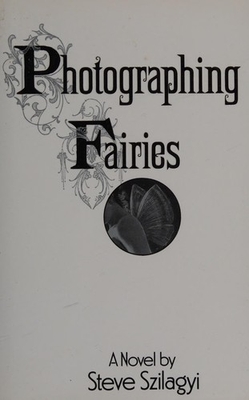
Photographing Fairies is a novel by Steve Szilagyi. Taking place in the 1920s, the novel is loosely based on the story of the Cottingley Fairies and includes Arthur Conan Doyle as a minor character. The story dwells on themes such as magic, human sexuality, photography, and human perception.

The Nutcracker and the Four Realms is a 2018 American fantasy adventure film directed by Lasse Hallström and Joe Johnston and produced by Mark Gordon and Larry Franco, from a screenplay by Ashleigh Powell. Co-produced by Walt Disney Pictures and The Mark Gordon Company, it is a retelling of E. T. A. Hoffmann's 1816 short story "The Nutcracker and the Mouse King", as well as of Marius Petipa and Pyotr Ilyich Tchaikovsky's 1892 ballet The Nutcracker, about a young girl who is gifted a locked egg from her deceased mother and sets out in a magical land to retrieve the key. The film stars Keira Knightley, Mackenzie Foy, Eugenio Derbez, Matthew Macfadyen, Richard E. Grant, Misty Copeland, Helen Mirren, and Morgan Freeman.
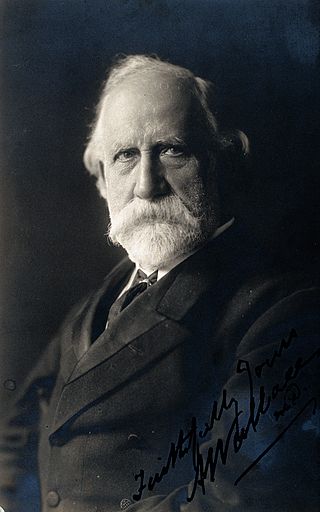
The Society for the Study of Supernormal Pictures (SSSP) was a short-lived psychical organization that formed in 1918 to investigate claims of spirit photography. It was established as a rival to the Society for Psychical Research.

The Cottingley Secret is a 2017 fantasy novel written by British novelist Hazel Gaynor, in which she retells the story behind the Cottingley fairies from 1917. This novel intermingles the real events that occurred in 1917 with a fictional story set in 2017. The Cottingley Fairies were made famous through a series of photographs taken from 1917 to 1921 by two young girls of nine and sixteen years old—Frances Griffiths and Elsie Wright—in Cottingley, England. The story became renowned worldwide mainly because of the intervention of Sir Arthur Conan Doyle who took particular interest on the fairy photographs and tale. The photographs, which depict the two girls in the company of fairies, were originally published in Doyle's article written in 1920 for Strand Magazine, but can be found in other articles as well since the matter of their copyright has been largely disputed.
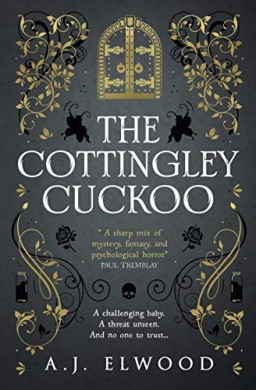
The Cottingley Cuckoo is an urban fantasy and horror novel by A. J. Elwood, pen name of English writer Alison Littlewood. It was first published in the United Kingdom in April 2021 by Titan Books. The book was inspired by the 1920 Cottingley fairy photographs, and is about Rose, a caregiver at the Sunnyside Care Home in the 2020s who is shown letters by a resident that were written in the 1920s soon after the fairy photographs were published. In the letters, the author claims to have also seen fairies, and maintains that he has proof of their existence.
















